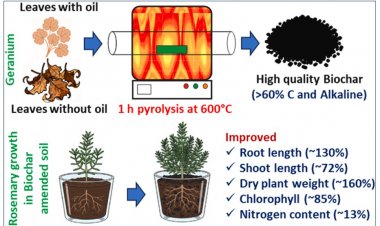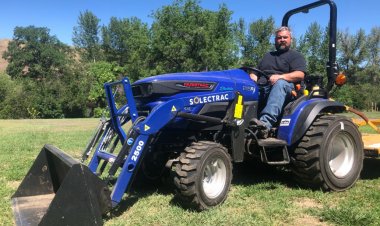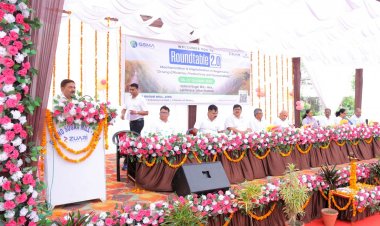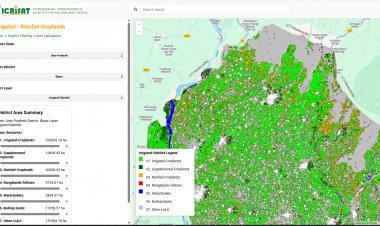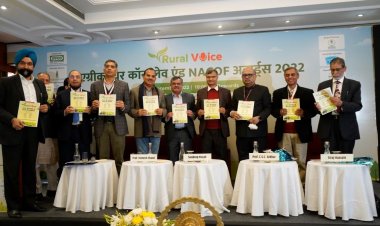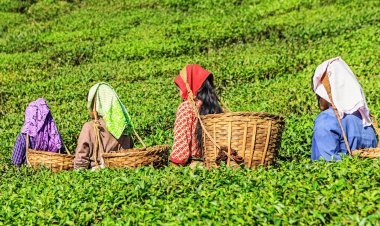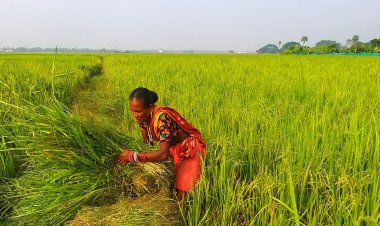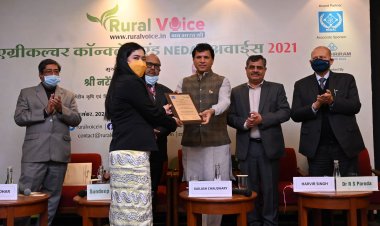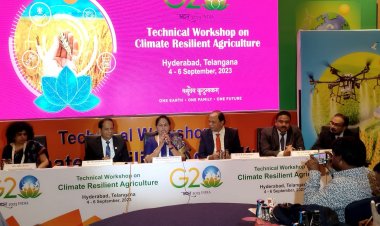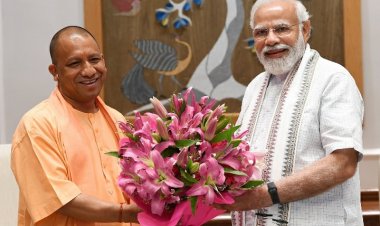Rural Voice Special: Seaweed farming replete with advantages for agriculture, food, health and beauty
Seaweed farming is being encouraged across the world, including in India. A type of algae, seaweeds grow in shallow seas and on rocky coasts. Apart from the food, energy, chemical and pharmaceutical industry, they are now being used even in nutritional, biomedical and personal care products. They are also used in goitre, cancer, bone replacement therapy and cardiovascular surgery. Seaweeds are known as the superfood of the 21st century.
Seaweed farming is being encouraged across the world, including in India. A type of algae, seaweeds grow in shallow seas and on rocky coasts. Apart from the food, energy, chemical and pharmaceutical industry, they are now being used even in nutritional, biomedical and personal care products. They are also used in goitre, cancer, bone replacement therapy and cardiovascular surgery. Seaweeds are known as the superfood of the 21st century.
Dr Sunil Pabbi, Head, Microbiology Department, Indian Agricultural Research Institute (IARI), Pusa, Delhi, spoke about open-sea seaweed farming, its uses and its advantages in the Rural Voice Agritech Show. You may watch this episode of the show by clicking on the video link given above.
Dr Pabbi said that seaweeds were abundantly found in the seas adjoining Tamil Nadu, Gujarat, Lakshadweep, Andaman and Nicobar Islands, Goa, Maharashtra, Andhra Pradesh and Odisha. 844 species of seaweeds have been found so far in India’s sea area. Among these, there are 434 species of red algae, 194 of brown algae and 216 of green algae.
Seaweeds are full of nutritious elements, said Dr Pabbi. They are now widely used — from food to increasing crop yields to cosmetics. Besides being full of vitamins, minerals, amino acids and proteins, they are very rich in potash. Being thus replete with nutrients, seaweeds are considered to be superfood and are increasingly being used in medicines and cosmetics.
Elaborating on the characteristics of the seaweed, Dr Pabbi said it has adhesive properties. Being a natural glue and polysaccharide, it is widely being used in the food industry. The ice-cream industry has witnessed an increase in its use. Besides reducing the pungency of food, said Dr Pabbi, seaweeds are used to increase the nutritional value. Seaweeds have been popular in the cuisine of countries like Japan and Korea. Since it is rich in iodine, seaweed should be increasingly used in our country, too, as people in our country suffer from goitre, which is caused by iodine deficiency.
Dr Pabbi said that the use of seaweeds was increasing in the cosmetics industry substantially. People prefer cosmetics prepared with seaweeds to synthetic ones as the former has natural, pure compounds and extracts. Dr Pabbi said that in view of its demand, the Government of India has said that it will raise seaweed production up to 10 crore tonnes under the Pradhan Mantri Matsya Sampada Yojana (PMMSY) by the year 2025.
There has been a lot of research on seaweeds over the last 20-22 years, said Dr Pabbi. Regarding its commercial farming, he said that seaweed cultivation was practised in shallow coastal waters. Bamboo rafts or tube nets are used for this purpose. The ideal conditions are: 30 ppt of salt in water, rocky or sandy surface, 26-30 degrees Celsius average temperature and slow seawater flow. Generally, three-metre square rafts or tube nets are used that float on the sea. The rafts cost about Rs 2,000 each.
It takes about 45-60 days for a seaweed crop to grow. The yield of seaweeds obtained from a raft ranges from 40-50kg to 240-260kg. Once taken out of the water, they have to be dried up. Drying up reduces the seaweeds to 1/10 of their weight. That is, if the wet seaweed measures 100kg, it reduces to 10kg after drying up. Under the PMMSY, financial assistance of Rs 1,500 and Rs 8,000 is given for culture raft and monoline/tube net respectively along with per unit output for marine algae farming.
Speaking on the Rural Voice Agritech Show, Dr Blossom Kochhar, Chairperson, Blossom Kochhar Group of Companies, said that the preference for green and eco-friendly products had grown among consumers over the past few years. Since seaweeds are natural, safe and full of highly effective natural substances, the skincare products prepared from them are giving better results. In a market that is changing fast and going global, their demand is going up.
Dr Kochhar said that the cosmetic products made up of seaweed compounds had a superior quality. This is why they are being increasingly used in the cosmetics industry. Thanks to the bioactive properties of seaweeds, these skincare products are creating a niche for themselves. They not only keep the skin moist but are also full of photo-protective, antioxidant, anti-allergic, anti-inflammatory, anti-acne, anti-wrinkling, anti-microbial and anti-ageing properties.
The company has hit the market with a series of cosmetic products made by using seaweeds, said Dr Kochhar. They have become very popular as people prefer these natural products to synthetic ones.



 Join the RuralVoice whatsapp group
Join the RuralVoice whatsapp group

















